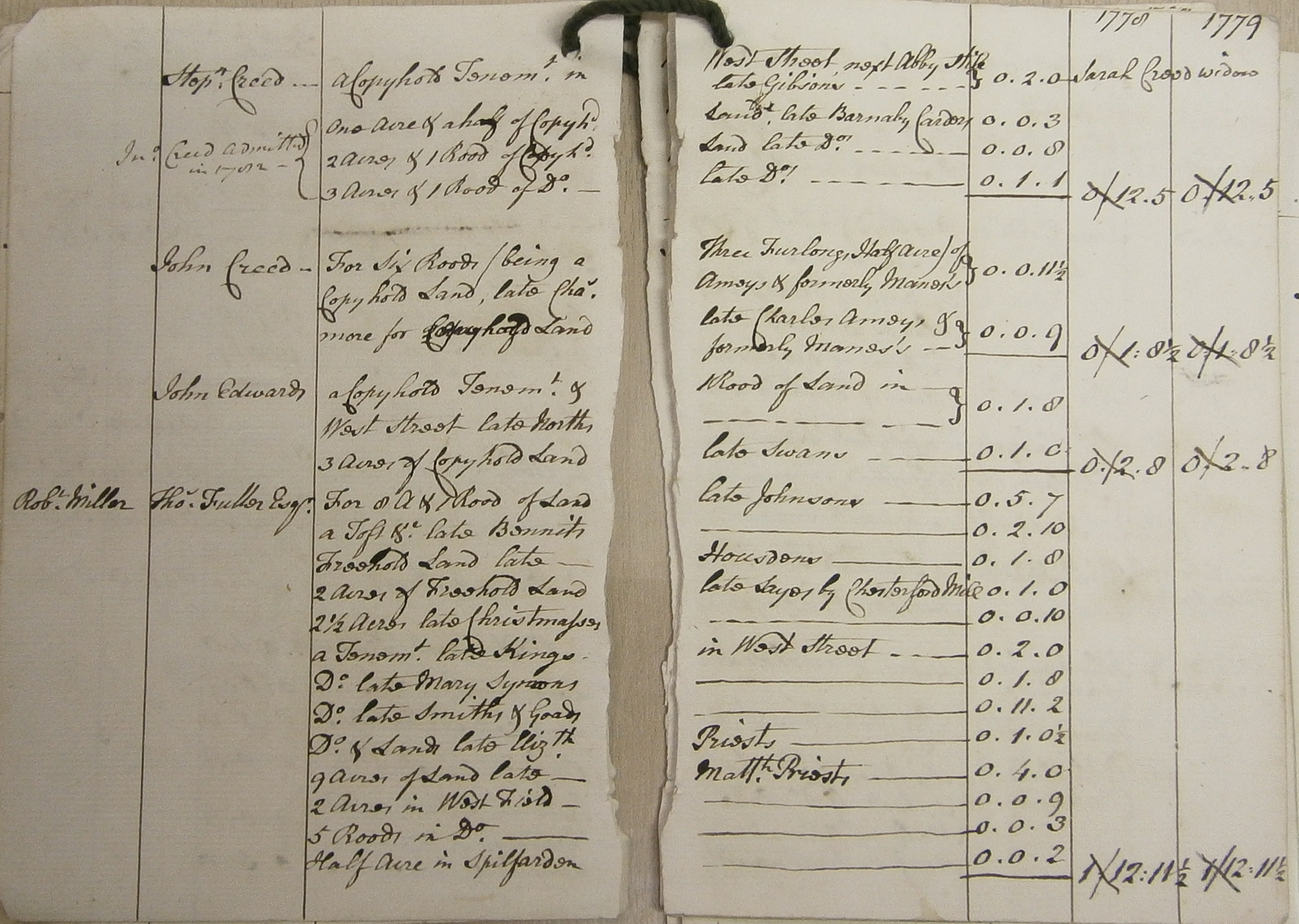Manorial Documents Register
With the recent release of the online index to the Manorial Document Register for Suffolk it seems timely to write a piece on manorial documents.
Manorial documents are often overlooked when conducting genealogical research. However, they can contain a wealth of information about your ancestors, whether they were involved in land transactions, had committed offences or were listed as members of the jury. They are also invaluable when researching the history of a property, recording the transfer of property often over multiple generations.
When William I arrived in 1066 and took possession of England, all land belonged to the monarch. The term real estate comes literally from royal estate. William distributed or enfeoffed much of his land to his major barons, or tenants-in-chief, in return for them providing him with loyalty and an army when required. The barons subsequently enfeoffed some of their lands to lesser barons or mesne lords, who in turn may have distributed some of their lands and so on, a process known as subinfeudation.
The lords of the manor so-formed granted land to tenants within the manor in return for services and payments according to the customs of the manor. Most tenants were unfree and held land on a customary or copyhold basis, others were free tenants and held a freehold tenure. In addition there were leasehold tenures in some manors.
There were three types of manorial court originally: the Court Baron and Court Customary were responsible for the general administration of the manor, the upholding of the customs of the manor, the payments of fines and rents, the business of land and property transfer and disputes between tenants. In theory the Court Baron discussed freehold land and the Court Customary discussed customary or copyhold land but both courts were frequently held together as one, called the Court Baron, usually every three weeks. All tenants were obliged to attend. The responsibilities of the Court Baron decreased over time as the importance and responsibilities of the parochial system increased and by the late eighteenth century most of the Court Baron’s business was concerned with copyhold land.

Many manors were also granted the right to hold a Court Leet by royal charter or warrant, which tried and sentenced minor crimes and misdemeanours and was held approximately every six months, but often in combination with the Court Baron. The Court Leet originally heard the View of Frankpledge, a system whereby the community was divided into groups or tithings of ten to twelve households, including all male tenants over the age of twelve. All men were responsible for the good behaviour of the others and any offences were brought to the court and the offender named. The Court Leet gradually declined in importance and is not often found in the records after the seventeenth century.
The court rolls were so named because the minutes from each hearing of the court were originally recorded on parchment, sewn together and stored in a roll. In later years minute books were used. The court rolls are perhaps the most common manorial records to survive. However, other very valuable sources of information are manorial surveys and maps. Manorial surveys included a description of the manor and its boundaries, its tenants, their tenure and rents and occasionally may include a map of the manor boundaries, particularly in the Interregnum period. There were three types of survey: extents were valuations of the lands, buildings, rents and duties of the tenants, often including a list of tenants, sometimes only including part of the manor such as the lord’s demesne (the lands of the manor occupied by the lord). A custumal listed the tenants with the customs by which they held their property. A terrier was a plot by plot description of the manorial lands and tended not to include tenants names.
Relief rolls were separate documents detailing one tenant surrendering a property and another being admitted. There may also be admissions books and / or Heriot books, the heriot being the payment due to the lord of a manor when a tenant died. These tended to be replaced by rent rolls as labourer services were replaced by payment of rent for property. Accounts were ledgers of tenant’s names and rents. Estreat rolls were separate lists of the amercements imposed for non-attendance at court and other offences. An essoin book was essentially an attendance book for the court.
Not all manorial documents are held at the relevant county archives. The Manorial Documents Register (MDR) is an index of all known manorial documents that is now maintained by The National Archives on behalf of the Master of the Rolls.
Accessing the Manorial Documents Register (MDR) (EDITED 6th October 2024)
The MDR for all counties in England and Wales may now be searched online. by parish name or name of manor: The Manorial Documents Register.
Searching on a parish name will reveal the names of the manors for which documents survive within that parish. Drilling down further provides a list of documents and where they are currently held.








